Malaga is one of the oldest cities in Europe, for those who want to read and learn about our history, you may be interested in knowing more about Malaga’s Roman past.
We have already covered the Phoenician origin of Malaga in another article that I recommend you to read; in it you will find not only interesting information, but also outstanding places that you can visit. In this article the approach is going to be similar, I am going to name you Roman monuments and remains in Malaga, so that besides knowing the Roman history of Malaga, you can visit the main places contributing in this way to their conservation.
I love history and archaeology, so I hope to be able to convey to you in this summary the fascinating past of our city.
The only way to approach immortality is by learning about our past; centuries of births and deaths in what for us are just a few minutes of knowledge.
The main archaeological pieces from this period should be available in museums such as those in Malaga or Antequera.
Romans in Malaga
The conquest of the peninsula by the Roman Empire began to take shape from the second century before our era. Malaga did not fight vigorously against the occupation, which favoured achieving a pact and continuing to be an independent city.
This special situation for our city helped to keep its economic growth on the rise. Trade with Rome contributed to the fish salting and preserving industry, as well as the famous Garum sauce.
The arrival of Rome led to a considerable expansion of the ancient Phoenician city beyond its walls and an improvement of the port.
The Romans ended up spreading throughout the province, proof of which is the large number of statues and archaeological remains scattered throughout the territory; from Cartama to Churriana, Marbella or Ronda. Many of the statues can be found in the unique works of the Museum of Malaga.
There is no lack of stories and legends, such as that of Marcus Crassus hidden in the Cave of the Treasure for 8 months after fleeing from Rome (* Plutarch Lives: Life of Crassus); or that of Ciriacus and Paula, two young Christians who were stoned to death near what today is Malaga Stadium, for refusing to reject their own faith.
Practically every time they do works and the ground has to be raised, new archaeological sites emerge. For example, the construction of the Subway has brought to light remains that had been waiting for centuries to receive the sun’s rays again.
Lex Flavia or Malacitane Law
Around 82 B.C. a new law give Malaga a municipal statute for the first time in its history. The Lex Flavia Malacitana is 5 tables that establish the transition of Malaga from a federated city to a Roman municipality, and therefore makes the people of Malaga at that time full Roman citizens with all the benefits.

The discovery of these tables dates from 1851 in the area of El Ejido (map), something that happened by chance. The workers who found these large bronze pieces intended to sell them by weight; fortunately, before they were melted down, the couple Heredia and Loring were able to rescue them, making them one of the first pieces in their important archaeological collection in Malaga.
These pieces were exhibited in the museum located inside the Jardín Botánico de la Concepción, their then residence. Nowadays some copies are in the Museum of Malaga; the originals are in the Archaeological Museum of Madrid.
The entire text can also be seen on the side of the Roman Theatre Interpretation Centre.
If you want to know the full text and its translation into Spanish I recommend you to download this PDF: https://dialnet.unirioja.es/descarga/articulo/825439.pdf
The Rectory’s pools
At the University of Malaga, in the lobby, you can find pools where the fish was macerated to create Garum. This somewhat spicy sauce was extremely coveted in the Roman Empire and was made with fish guts and parts of fish; today I don’t think it enjoyed great popularity.
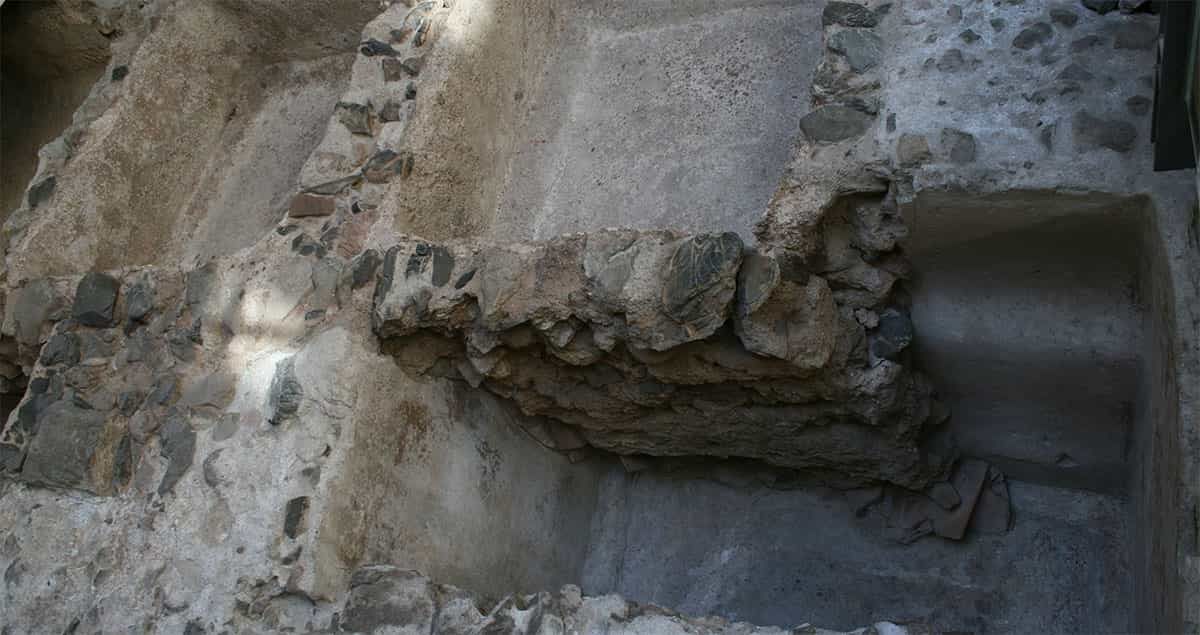
Location:
https://goo.gl/maps/MhD7xJwGsaZNoSNfA
Roman Theatre
This theatre was built on the slope of Mount Gibralfaro and is of medium size. It was discovered in 1951 during some works and for its restoration the old Casa de la Cultura had to be demolished, as it had been built on part of it.

Its construction takes place during the period of confederate Malaga; a sample of how the Roman culture was penetrating in a decisive way in our city. It was built over Roman baths, which were probably one of the first in our province.
This Roman theatre building would end up being abandoned at some point in the 3rd century; being occupied mostly with fish salting tanks and Garum until the 5th century; later it would end up being used as a necropolis.
Why was it abandoned? I have not found a clear answer to this question although it is presumably related to the fall of the Roman Empire in the West in the mid-5th century. Several generations of Malaga people were able to enjoy its spectacles centuries ago; in its surroundings many stories would have been forged that we will never know.
Many times we wonder where the missing pieces of the monuments are. This time we know that the theatre was used as a quarry; pieces of it can be found in the Muslim Alcazaba.
Nowadays the Roman Theatre has an interpretation space that recovers part of our Roman past, besides its scenic function and a wooden floor; like the one it would have during the years it was used.
The following animation shows us how life would be around Roman theater:
Visiting the Roman Theatre
Something that differentiates this Roman theater from others is the state of conservation of its Orchestra and Graderio; the latter had armchairs where illustrious characters of the city would sit.
It is undoubtedly one of the emblematic monuments of Malaga that you should not miss.
- Opening hours: The theatre can be visited in Calle Alcazabilla from Tuesday to Saturday from 10.00 to 6.00 pm and on Sundays from 10.00 to 4.00 pm.
During the Malaga Fair the closing time is 3.00 pm. - Closed: Monday, 1st and 6th January, 1st May, 24th, 25th and 31st December.
- Location and photos: https://goo.gl/maps/nJrGB7VfuPCbkGAy5
- Official page with schedules: https://www.juntadeandalucia.es/cultura/enclaves/enclave-arqueologico-teatro-romano-de-malaga
Roman wall
If you are interested you can visit one of the parts of the ancient Roman wall for free. It is integrated in the Hotel Vincci Posada del Patio.
As I said, the visits are free and last about 15 minutes. For more information you can contact from the following link:
https://www.patrimoniomalaga.es/patrimonio-material/bienes-inmuebles/historia-antigua/malaca-romana/muralla-romana/
Location:
https://goo.gl/maps/yCyxCZYwicxJXcTq9
Acinipo Ruins in Ronda
When you visit Malaga you cannot miss the opportunity to visit the wonderful Ronda; a town situated in the heights and with a marked Muslim past. If you are also looking for the Roman remains, you can go to Acinipo, 20 kilometres away.
So many centuries sheltering lives and stories that would end up being devoured by the insatiable passage of time, which only leaves us a few brushstrokes of the splendour that this place once reached.
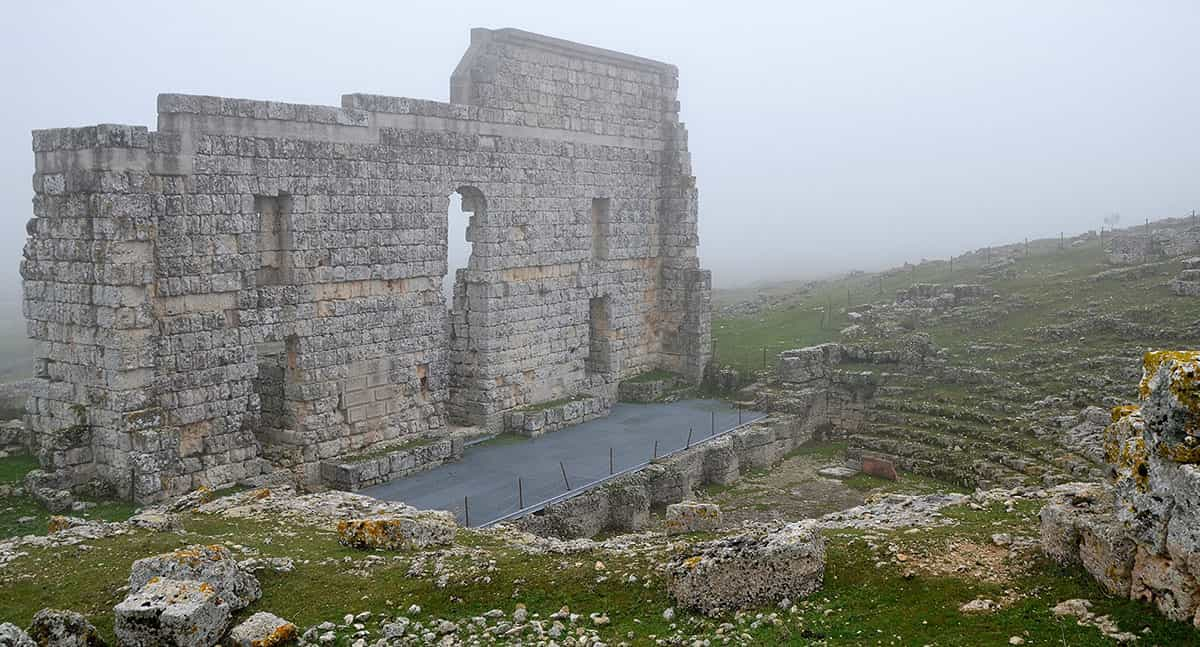
It is interesting to know that Acinipo was an occupied area since the Neolithic, passing through the Copper and Bronze Ages. It would not be until the arrival of the Roman Empire that it would reach all its splendour; especially from the first century after our era.
Why did Acinipo disappear? The reason is not known, but from the 3rd century on, the population was losing importance in favour of Arunda (Ronda). Finally, at some undetermined time in the 7th century or later, it would end up being abandoned. So many centuries sheltering lives and stories, that would end up being devoured by the insatiable passage of time, that only leaves us a few brushstrokes of the splendour that this place once reached.
In Acinipo you can find the remains of Roman Baths, the wall that surrounded the city and the theatre; it must have been an impressive Roman city, which was mentioned by Strabo and Pliny the Elder. The latter is the best preserved of the elements that have survived to this day.
Other Roman villas and sites in Malaga
There are numerous archaeological sites that show us what life was like in the ancient Roman province of Malaga. Some are well preserved and can be visited, while others are abandoned or not accessible to the public.
ROMAN VILLA OF THE LIGHTHOUSE IN TORROX
This villa, located next to the current Torrox lighthouse, is very close to the sea and was discovered throughout the 20th century during the construction of the lighthouse. It has Roman factories for salting fish; there are also some thermal baths and a necropolis.

It is in good condition:
https://goo.gl/maps/in2Nf5PZEaZQkstQ8
More information:
https://www.malaga.es/en/turismo/patrimonio/ds-0/tp-0/bs-villa%20roman%20torrox/lis_cd-9652/lighthouse-of-torrox-unique-site
Roman villas in Antequera (Anticaria)
Antequera, or Anticaria as it was known today, had a great deal of Roman activity. In this municipality of Malaga we find the Roman Villa of La Estación, an archaeological site with thermal baths, currently being restored.
It was abandoned in the late 4th or early 5th century.
Location and photos:
https://goo.gl/maps/yurTkF1CUQrgVKp78
More information:
- Antequera website:
https://turismo.antequera.es/en/place/villa-romana-de-la-estacion/
There are other Roman ruins in Antequera, such as Singilia Barba, which is in a state of abandonment and can be found here, or at Cortijo de Robledo; the latter of which was moved during the construction of the motorway and is linked to the city of Aristipi.
ROMAN VILLA OF MARBELLA AND RÍO VERDE
Next to the mouth of the Guadalmedina River and along the coast would be the supposed Roman city of Cilniana, although little remains of it today.

About 5 kilometres away we can find the Roman Villa of Rio Verde; discovered by a British traveller during the 18th century, although excavation would not begin until the 1960s.
The Roman villa of Rio Verde is in a fairly good state of conservation and contrasts with the surrounding houses.
You can visit another article I wrote about things to do in Marbella, where this and other monuments are detailed.
Location and photos: https://goo.gl/maps/PjtffpFGArsxcq6u8
LACIPO, A ROMAN CITY NEAR CASARES
Only 4 kilometres from Casares is the ancient Roman city of Lacipo. Part of its walls have been preserved and it seems that it enjoyed great importance in the past, appearing in texts by Pliny the Elder, who defined it as “an open city despite its walls“.

Later, with the arrival of the Visigoths, they would use it as a necropolis.
The main archaeological remains found are in the Museum of Malaga.
- Location and photos: https://goo.gl/maps/EQEgrGDjxJq9JLps8
- Casares website: http://www.casares.es/en/tourism/what-to-see-in-casares/lacipo/
Cartima, the ancient roman city in Cartama
The Roman remains can be found next to the church in the centre of the city. Cartama was an important urban centre at that time, and all over the city you can find details that show us its past; a Roman road and its bridge, which linked Malaga with the interior of the province.
In the square Plaza de la Constitución you can see the remains of Roman houses.
- Location: https://goo.gl/maps/UfnpSmaCf4j2onuCA
- Information and photos: http://www.cartama.es/3901/restos-romanos
MORE ROMAN VILLAS
There are many more Roman villas, but some of them can’t be visited while others are abandoned:
- Roman villa Torre de Benagalbón
- Roman villa in Torremuelle (Map)
- In Estepona there is another roman villa (map)
- Benalroma in Benalmadena (I did not know this one existed until today, here you can find it in the map)
- Roman villa of Los Molinillos in Benalmádena (Map)
Mausoleum of the Capuchina in Mollina, Antequera
This site is about 7 kilometres from Antequera and requires an appointment to visit it.
Its construction dates from the second half of the second century.
- Web in Spanish: http://www.mollina.es/6851/yacimientos-romano
- Location: https://g.page/bodega-la-capuchina?share
CASTELLUM OF SANTILLAN
Also in Mollina are the remains of an ancient Roman villa from the first and second centuries after our era.
The place is in the Parque Santillan, a beautiful natural space where families usually go for lunch. The place has a lawn area, public barbecues, playground for children, benches and wooden tables under a large tree.
Map and photos: https://goo.gl/maps/KnmqB2iSN3pzwPYS7
The Antequera Ephebus
Considered one of the most beautiful Roman bronze sculptures in Spain, it was created during the first century. It was found by chance by a tractor while tilling the farmhouse Cortijo de las Piletas in 1955.

It is in the Antequera Museum and represents a naked teenager. This type of figure, held in their hands, some kind of ornament or utensil; they were used during banquets or celebrations.
It is 1.43 metres high, weighs 37.5 kilos and is in good condition.
You will also find in the museum the Venus of Antequera, found in the Roman Villa of Estacion de Antequera; also the family tomb of the Acilians from the second century, a mausoleum where one of the most influential women of the then territory was buried.
Location and opening time of the museum:
https://goo.gl/maps/xKRUG5YVZmQkmC6z7
Roman Baths in Malaga
Roman baths were public places for cleaning and relaxation, when not medicinal if the water had healing properties. They were also popular places for social gatherings; we can expect that with the Romanization of the province its use would be extended all over Malaga.
The thermal baths usually had a system of ovens to heat the water, thus giving the option of cold, warm or hot baths.
In the province of Malaga there are remains of Roman baths scattered throughout the territory, some better preserved than others; in some it is even possible to take a bath today.
You can learn more about the Roman baths in Wikipedia
https://en.wikipedia.org/wiki/Thermae
Roman Baths Las Bovedas
Next to the mouth of the Guadalmina River in Marbella, are these remains of these Roman baths; related to the ancient Roman city of Cilniana.
There are remains of the original floor, there were hot and cold water baths by means of ovens.
Location and opening times: https://goo.gl/maps/HaCq3jkbQ7mFWd9s7
La Hedionda Thermal Baths
Legend tells us that during the first century before our era, Caesar’s troops succeeded in curing a skin disease, while waiting to engage in battle. You can learn more about this legend in our article on thermal baths, as it is still a place you can enjoy today.
Location: https://goo.gl/maps/gcYn8HNTudq
Roman baths in Antequera
Antikaria, an ancient Roman city as witnessed by the two thermal baths that have been found in addition to the numerous archaeological remains.
They were in operation from the second half of the first century after our era until the fifth century. It had pools of cold, warm and hot water.
Roman Thermal Baths of Santa Maria in the historical centre:
https://goo.gl/maps/8rNU7Q7yoaVZKrDu8
Roman Thermal bath Rio de la Villa in:
https://goo.gl/maps/iZWbVBwM6xy2rDAz9
Roman baths in Alameda
In the town of Alameda, these Roman baths are in quite a good state of conservation. Nowadays you can visit this place, so it can be the perfect excuse to spend a day in the village of Alameda, Malaga.
Excavations in the area have rescued the baths and a public building; they would be integrated into the public square, around which all the public and political activity of the city would revolve. This Roman city is documented between 2nd and 4th centuries after our era.
In this place you will know in detail information about the Roman society and the importance of the thermal baths at that time.
Location and photos:
https://goo.gl/maps/Lia6aym43sCc6jBE8
opening time and more information:
http://www.rutadeltempranillo.es/termas-romanas/?lang=en
Roman baths in Estepa-Sierra de Yeguas
This archaeological site is located two kilometres from the Fuente de Piedra lagoon, although it is currently in a state of abandonment for lack of new news.
If you want to visit, you can do so by following the directions on this map:
https://goo.gl/maps/xYBhNZBMmuExMbRD6
Aqueducts and Roman bridges in Malaga
Aqueducts were very important in Roman cities, as well as the bridges that connected them with the urban centers; they supplied water to different parts of the city.
A few have survived to this day:
- Aqueduct and Roman bridge at Cartama, in the heart of the city.
- Roman aqueduct in Ronda: Aqueduct Fuente de Arena, used to supply water to Alundra (Ronda) from the 3rd century. (https://www.malaga.es/en/turismo/patrimonio/ds-0/tp-0/bs-fuente%20arena/lis_cd-10101/acueducto-romano-de-fuente-de-la-arena-patrimonio-hidraulico)
The history and origin of Malaga continues
The only way to approach immortality is by learning about our past; centuries of births and deaths in what for us are just a few minutes of knowledge.
I am sure that I am left with numerous Roman discoveries; to tell the truth, Malaga’s Roman past is so rich and extensive that there is not enough space to explain it in a single article.
If you are interested in further reading about the Romans, I can recommend another article I wrote about what it would be like to live in Roman times and how much it would cost us to go on holiday. There you will find also what would be the price of the Garum sauce in pounds, a trip from Londinium to Malaca, as well as other curiosities.
Finally I invite you to follow our blog to gradually discover how our city has been culturally enriched over the centuries. Soon the Visigoths and the Muslims would come to our coasts, but we will deal with this another time.
Consider to share this post if you find it interesting, it will be motivating for me to keep writting about our history. 🙂
Comparte este artículo:



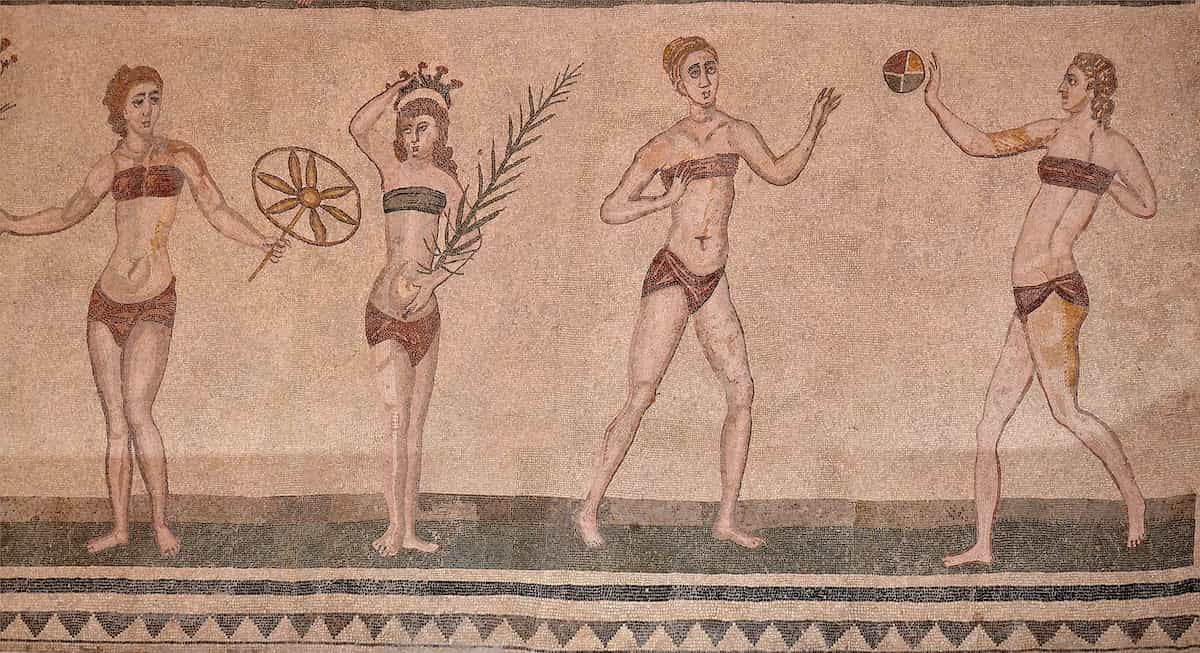
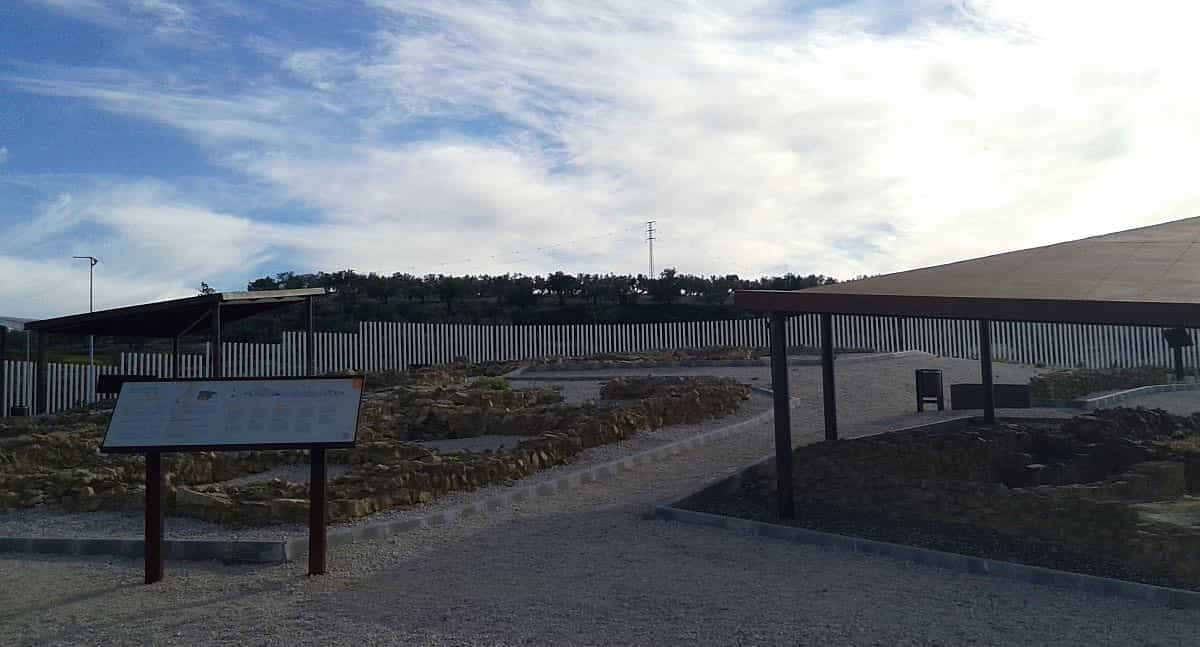
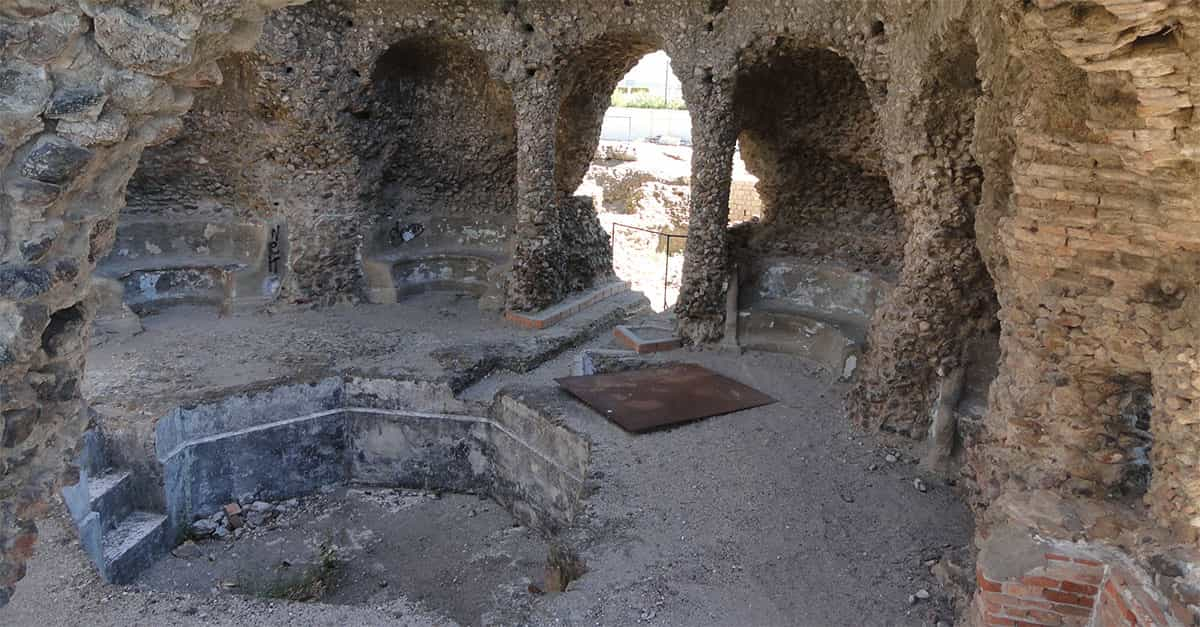




Really enjoyed this, thanks for taking the time to write it and out it into English too
Thank you, it worths the effort if you found the article interesting enough to write a comment 🙂
Very worthwhile research.
Thank you for reading!
Makes me want to visit more Roman archaeology when I am next in Malaga. Thank you so much for taking the time to inspire me.
Im so glad it did, thanks to you for taking the time in reading and commenting!
Thank you for the information.
Thanks to you for reading and commenting!